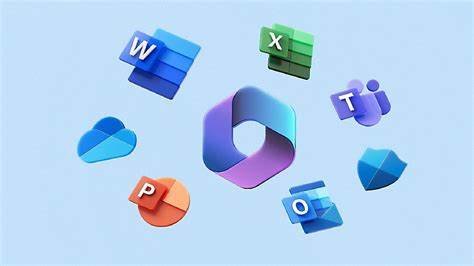Regular IT maintenance is the unsung hero behind smooth business operations – especially for Australia’s small and medium-sized companies. In today’s cloud-driven world, many Aussie rely on services like Microsoft 365 for email and collaboration, and various cloud platforms to run their applications. However, when IT upkeep is ignored whether it’s failing to install updates, neglecting backups, or postponing hardware checkups, the consequences can be severe. From security breaches to crippling downtime, insufficient maintenance puts a business’s security, performance, and budget at risk.
Security Risks of Neglecting IT Upkeep
Cybersecurity threats are constantly evolving, and outdated systems are low-hanging fruit for attackers. Ignoring regular updates and patches means known software vulnerabilities remain open for exploitation. Cyber criminals frequently exploit known, unpatched vulnerabilities to infiltrate business systems (Australian Small Businesses Most Exposed to Cyber Risk: ASIC Report | AJG Australia). In fact, a recent Australian survey found that 41% of small businesses do not apply security patches for applications (Australian Small Businesses Most Exposed to Cyber Risk: ASIC Report | AJG Australia) – an alarming gap that leaves nearly half of SMEs exposed.
Unpatched operating systems or software can lead to incidents like ransomware infections or data breaches that would have been preventable with basic maintenance.
Neglected IT systems also miss out on improved security features. For example, Microsoft 365 and other cloud services regularly release security enhancements, but they only protect you if enabled and kept up to date. Companies that don’t review their cloud configurations or update their account protections (like turning on multi-factor authentication) risk compromise. It’s telling that about 33% of small businesses have no or limited use of multi-factor authentication, a simple but crucial security measure often rolled out during maintenance reviews. Regular IT upkeep ensures these protections are implemented correctly, reducing the chance of breaches.
Impacts on Performance and Productivity
Security isn’t the only concern – poor IT maintenance also degrades day-to-day performance. Computers and networks, much like vehicles, need tuning and care. When maintenance is skipped, systems can slow to a crawl, software may crash frequently, and network connections become unreliable. Employees then face constant tech hiccups that sap productivity. For a business with 20 staff, even minor slowdowns and interruptions add up to many hours of lost work.
More dramatically, lack of maintenance can lead to major downtime. Consider a server that hasn’t been monitored or updated: it’s far more likely to fail unexpectedly. Such outages bring operations to a standstill. Employees can’t access email, customer orders can’t be processed, and work grinds to a halt. Even a single hour of downtime can be extremely costly. Industry research shows the average cost of IT downtime for SMBs ranges from $10,000 to $50,000 per hour (Managed IT Services Sydney | Prevent Costly IT Downtime). Lost sales, idle staff, and emergency IT repair bills all contribute to this staggering figure. For many Sydney businesses, just a few hours of downtime per year could equal their entire annual IT budget.
Financial Implications: Pay Now or Pay Much More Later
Some companies avoid regular IT maintenance thinking it saves money for instance, delaying software upgrades or not paying for an IT support contract. This approach is penny-wise and pound-foolish. While proactive maintenance has a cost, the costs of emergencies and inefficiency are far higher. When systems break due to neglect, repair expenses often come at premium rates (especially if calling technicians after hours). One Australian IT services study noted that reactive “break-fix” support tends to incur higher emergency fees, longer downtime, and unpredictable expenses, whereas proactive maintenance smooths out costs (Managed IT Services Sydney | Prevent Costly IT Downtime).
Consider the example of ransomware or hacking due to unpatched software. Without maintenance, a company might save a little on IT in the short term, but a single cyber incident could cost tens of thousands in recovery and business interruption. The average cyber incident cost for a small business in Australia is around A$46,000 per incident (AI boosts Australian cyber defences against rising threats). This includes not just technical recovery but also lost revenue and potentially regulatory fines if customer data is lost. Regular maintenance (like keeping security patches up to date and monitoring systems) drastically reduces the likelihood of such incidents, saving money (and headaches) in the long run.
Key Areas That Require Regular IT Maintenance
For non-technical managers, “IT maintenance” might sound abstract. In practice, it consists of several concrete activities that keep technology running securely and efficiently:
- Software Updates and Patches: Installing updates for operating systems (Windows, macOS), office software, web browsers, and especially security software. Updates often patch vulnerabilities and improve stability.
- Hardware Checks: Monitoring server hardware, networking equipment, and PCs for signs of failure. Replacing components proactively can prevent sudden outages.
- Network and Wi-Fi Maintenance: Ensuring network devices (routers, firewalls) have updated firmware and that Wi-Fi networks are secure. This also includes internet service monitoring critical given Australia’s wide use of NBN and business broadband.
- Backup Management: Regularly backing up important data and testing those backups. This applies to on-premises files and cloud data. Remember, 30% of small businesses have no backups, a risk no business should take.
- Security Monitoring: Maintaining antivirus/anti-malware tools, spam filters, and intrusion detection systems. Also, reviewing user accounts and access rights periodically. Many breaches occur from stale accounts or unchanged default passwords.
Cloud Services Oversight: Reviewing cloud platform settings (whether in Microsoft 365, Google Workspace, or others). For example, making sure all user accounts in Microsoft 365 have appropriate licenses and security settings, archiving old accounts, and checking that integrations (with CRM, accounting software, etc.) are running smoothly.
Cloud Platforms and Microsoft 365 Still Need Maintenance
A common misconception is that if a business has moved to the cloud, IT maintenance is no longer necessary. While cloud services like Microsoft 365, Google Cloud, or AWS reduce the burden of managing physical infrastructure, they don’t eliminate the need for upkeep. In fact, ensuring your cloud environment is well-maintained is critical, just in different ways.
Take Microsoft 365 as an example. It’s a cloud-based suite, but an SME administrator (or their IT provider) should still manage it actively: adding/removing users, adjusting security settings, and monitoring usage. Regular maintenance in a cloud context includes:
- User and License Management: Removing ex-employees’ accounts promptly (to prevent unauthorized access) and making sure the company isn’t paying for licenses it no longer needs. Also, assigning the right licenses so staff have the tools they require.
- Security Audits: Verifying that cloud security features are in place – e.g. enforcing multi-factor authentication for email and logins and using data loss prevention (DLP) policies to protect sensitive info. Microsoft 365, for instance, offers tools to block suspicious sign-ins and phishing emails, but they need to be configured and reviewed regularly.
- Data Backups and Retention: Just because data is in the cloud doesn’t mean it’s backed up to your needs. Cloud providers have redundancy, but an admin should set retention policies for email and files (in case an item is deleted). Many Australian businesses also choose to use third-party backup solutions for Microsoft 365 data for extra peace of mind.
- Performance Monitoring: For cloud servers or services hosted on platforms like Azure or AWS, monitoring usage (CPU, memory, etc.) and adjusting resources is part of maintenance. If an application is slowing down, you might need to allocate more resources or identify a memory leak in an app task that falls under maintenance even though the hardware is virtual.
Staying Informed on Updates: Cloud platforms frequently roll out new features or deprecate old ones. Keeping an eye on the Microsoft 365 roadmap, for example, lets you know when a new security feature becomes available that you should enable, or when an old version of Office apps will retire so you can update users’ machines.
Strategic Guidance: Beyond just fixing stuff, a good MSP will also provide strategic advice. This might include planning hardware upgrades before old equipment fails, recommending migrating a legacy application to the cloud for better reliability, or ensuring the company’s IT aligns with frameworks like the ASD Essential Eight (the Australian Cyber Security Centre’s baseline strategies)
Partner with TechBlokes for affordable and reliable IT solutions:
We at TechBlokes know how vital regular IT maintenance and upgrades are. Our experts offer secure and cost-effective IT solutions that are customized to suit your business requirements. From regular maintenance schedules to full upgrades, we’ll ensure your IT systems operate at their best. Our services are:
- Regular software updates and timely security patches
- Disk cleanups and virus scans
- Backup and recovery solutions
- Hardware maintenance and upgrades
- IT consulting and strategy
Don’t let technology issues get in your way. Call TechBlokes today to schedule a consultation and start the path to a more productive, efficient, and secure IT system.
Make TechBlokes your go-to partner for all your IT requirements




